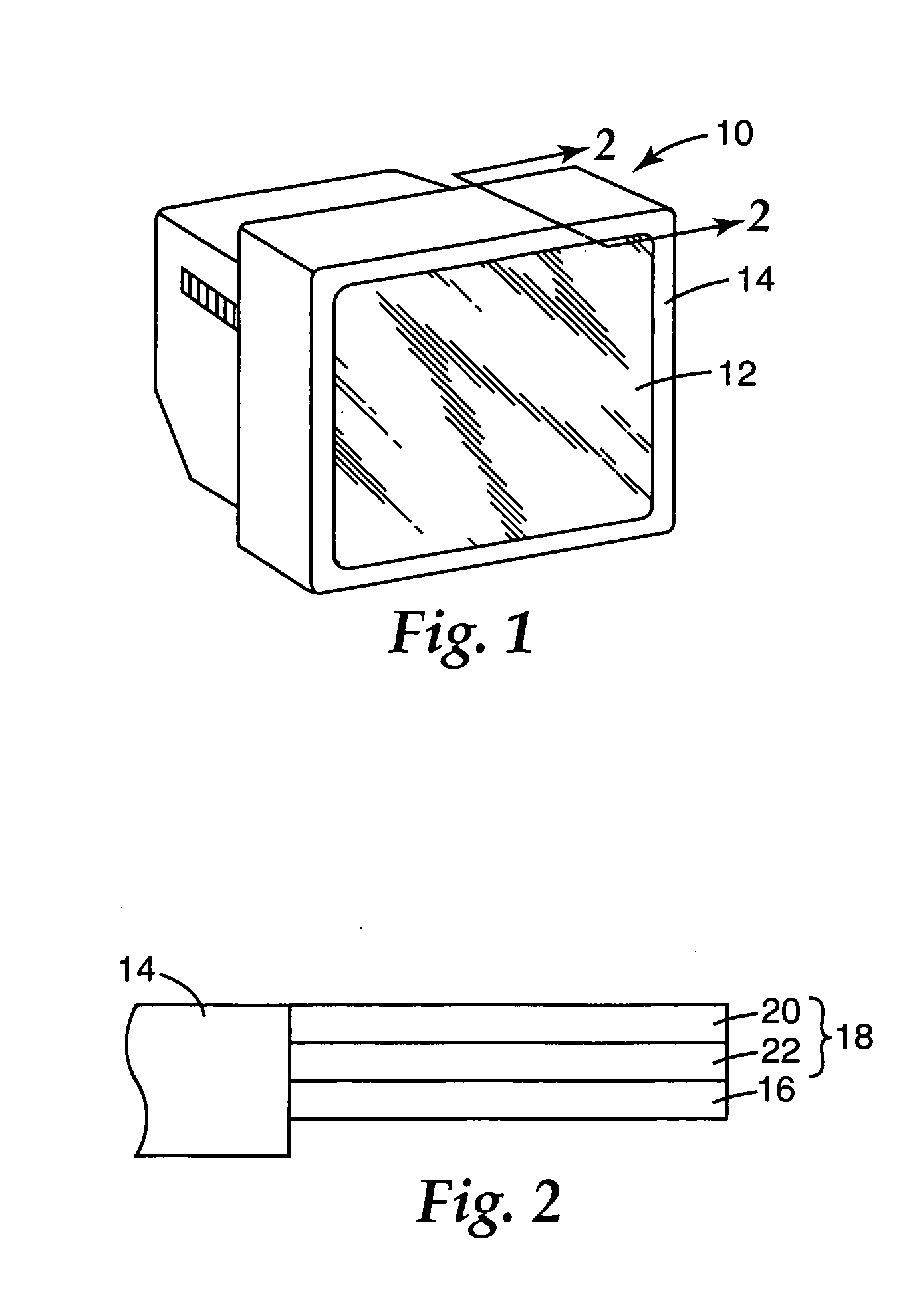Fluoropolymer coating compositions with multifunctional fluoroalkyl crosslinkers for anti-reflective polymer films
a polymer film and fluoroalkyl crosslinker technology, applied in the field of antireflective films, can solve the problems of low crystallinity organic solvent soluble fluoropolymers with undesired mechanical properties, poor crosslinking resistance, poor interfacial adhesion of the fluoropolymer layer to other polymer or substrate layers,
- Summary
- Abstract
- Description
- Claims
- Application Information
AI Technical Summary
Benefits of technology
Problems solved by technology
Method used
Image
Examples
example 1
Photocrosslinking Fluoropolymers with Fluoroalkyl Substituted Multiacrylate Exemplified by FBSAA
[0111] Brominated fluoroelastomer E-15742, or iodinated fluoroelastomer E18402 were each dissolved individually in containers with either MEK or ethyl acetate at 10 weight percent by shaking at room temperature. The prepared fluoropolymer solutions were then combined with FBSAA in various ratios. The mixed fluoropolymer / FBSAA solutions were subsequently coated at a dry thickness of about 1-2 mil using a 40 mil thickness blocked coater onto PET or hardcoated PET. The coated films were dried briefly and subjected to heating at 100-140 degrees Celsius for 2 minutes.
[0112] Subsequently the films were subjected to UV (H-bulb) irradiation by 3 passes at the speed of 35 feet per minute. Alternatively, the films were subjected to UV irradiation from a 254-nm bulb using a similar approach. After UV irradiation, the cured films were removed from substrates and subsequently immersed into MEK solve...
example 2
Photocrosslinking Fluoropolymers with Hydrocarbon Multiacrylate TMPTA
[0113] Brominated fluoroelastomer E-15742, or iodinated fluoroelastomer E-18402 were each dissolved individually in containers with either MEK or ethyl acetate at 10 weight percent by shaking at room temperature. The prepared fluoropolymer solutions were then combined with TMPTA in various ratios. The mixed fluoropolymer / TMPTA solutions were subsequently coated at a dry thickness of about 1-2-mil using a 0-mil thickness blocked coater onto PET or hardcoated PET. The coated films were dried briefly, then subjected to heating at 100-140C for 2 minutes.
[0114] Subsequently the films were subjected to UV (H-bulb) irradiation by 3 passes at the speed of 35 feet per minute. Alternatively, the films were subjected to UV irradiation from a 254 nm bulb using a similar approach. After UV irradiation, the cured films were removed from substrates and subsequently immersed into MEK solvent for dissolving the cured films. After...
example 3
Photocrosslinking Fluoropolymers with Perfluoropolyether Substituted Multiacrylates (HFPO-acrylate-1 or HFPO-acrylate-3)
[0115] Brominated fluoroelastomer E-15742, or lodinated fluoroelastomer E-18402 were each dissolved individually in containers with either MEK or ethyl acetate at 10 weight percent by shaking at room temperature. The prepared fluoropolymer solutions were then combined with HFPO-acrylate-1 or HFPO-acrylate-3 in various ratios. The mixed fluoropolymer / HFPO-acrylate-1 or fluoropolymer / HFPO-acrylate-3 solutions were subsequently coated at a dry thickness of about 1-2-mil using a 40-mil thickness blocked coater onto PET or a hardcoated PET. The coated films were dried briefly, then subjected to heating at 100-140 degrees Celsius for 2 minutes.
[0116] Subsequently the films were subjected to UV (H-bulb) irradiation by 3 passes at the speed of 35 feet per minute. Alternatively, the films were subjected to UV irradiation from a 254 nm bulb using a similar approach. After ...
PUM
| Property | Measurement | Unit |
|---|---|---|
| Refractive index | aaaaa | aaaaa |
Abstract
Description
Claims
Application Information
 Login to View More
Login to View More - R&D
- Intellectual Property
- Life Sciences
- Materials
- Tech Scout
- Unparalleled Data Quality
- Higher Quality Content
- 60% Fewer Hallucinations
Browse by: Latest US Patents, China's latest patents, Technical Efficacy Thesaurus, Application Domain, Technology Topic, Popular Technical Reports.
© 2025 PatSnap. All rights reserved.Legal|Privacy policy|Modern Slavery Act Transparency Statement|Sitemap|About US| Contact US: help@patsnap.com



